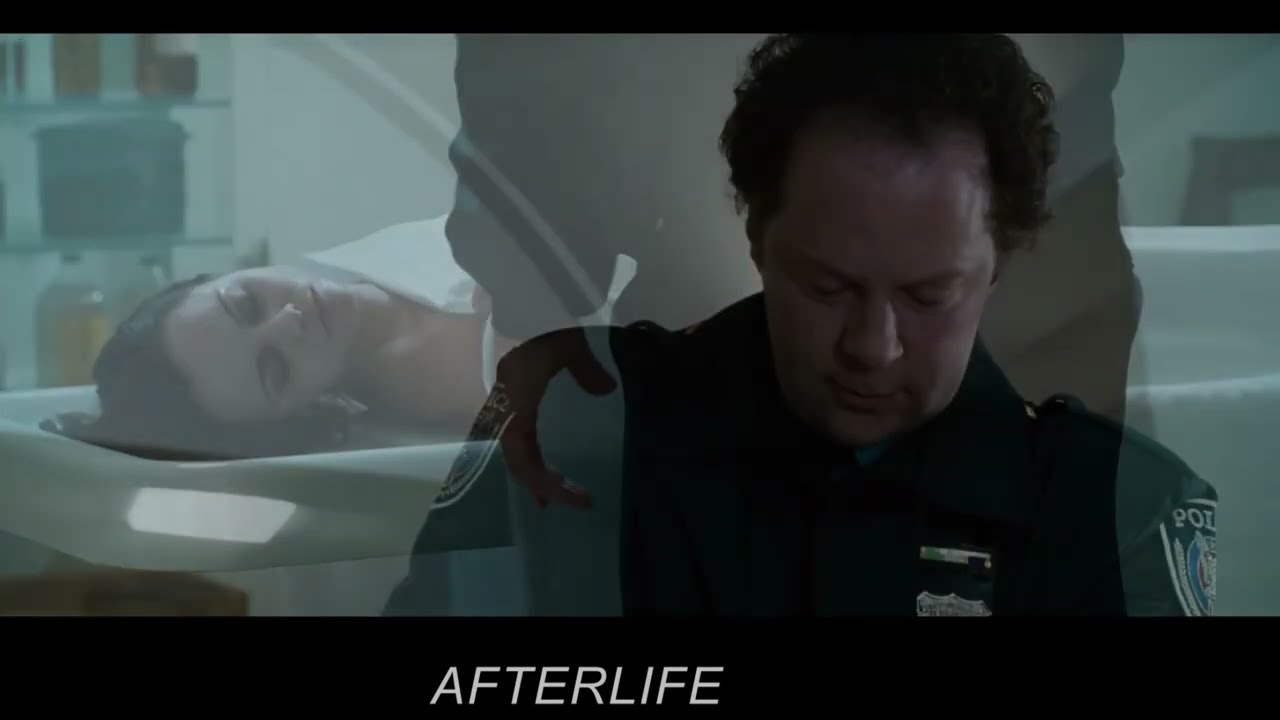
After Life (2009) is not a film that seeks to provide comfort. Instead, it lingers in that uncomfortable space between certainty and ambiguity, a place where the living and the dead may simply be two sides of the same coin. Directed by Agnieszka Wójtowicz-Vosloo in her first feature, the movie is less about supernatural thrills and more about the unnerving question of what it means to truly be alive.

The Premise
The story begins with Anna (Christina Ricci), a young woman who regains consciousness on a mortician’s table after what appears to be a fatal car accident. Standing over her is Eliot Deacon (Liam Neeson), a funeral director who calmly informs her that she has died. Anna refuses to accept this and clings to the idea that she is still alive. What follows is an eerie psychological duel between Anna’s instinct to survive and Eliot’s unsettling certainty about her death.

Performances That Haunt
- Liam Neeson as Eliot Deacon – His quiet menace and inscrutable calm create a chilling portrait of authority. Neeson embodies a man who may either be a gatekeeper to the afterlife or a manipulator of fragile minds.
- Christina Ricci as Anna – Ricci carries the film’s emotional weight. Her vulnerability is palpable, but beneath it lies an iron determination to resist the inevitable. Her performance ensures Anna is never reduced to a victim.
- Justin Long as Paul – As Anna’s grieving boyfriend, Long grounds the narrative in raw human emotion. His suspicion that something unnatural is happening adds a tragic layer of desperation.
The Film’s Central Question
What makes After Life truly unsettling is its refusal to answer the most critical question: Is Eliot truly a medium who communicates with the dead, or is he exploiting the vulnerable? The ambiguity becomes the film’s central engine, forcing viewers to confront their own discomfort with mortality and perception. The lack of resolution is not a flaw—it is the very point.

Style and Atmosphere
The film’s visual design is cold, clinical, and deeply unsettling. Stark lighting and muted tones create a world that feels suspended in time. The pacing is deliberate, almost suffocating, which enhances the tension but may challenge viewers expecting a conventional horror rhythm. This is not a film of jump scares but of existential dread.
Final Verdict
After Life is a haunting psychological exploration of life, death, and the gray spaces between. It does not provide neat answers, and in that refusal lies its power. This is a film that lingers long after the credits, whispering doubts into the quiet corners of your mind.
Rating
★★★★☆ (4/5)
Conclusion
For those willing to embrace ambiguity, After Life offers a unique and chilling meditation on mortality. It may not satisfy those who seek closure, but for audiences intrigued by the unknown, it delivers an experience that feels as haunting as the silence of a funeral home after midnight.